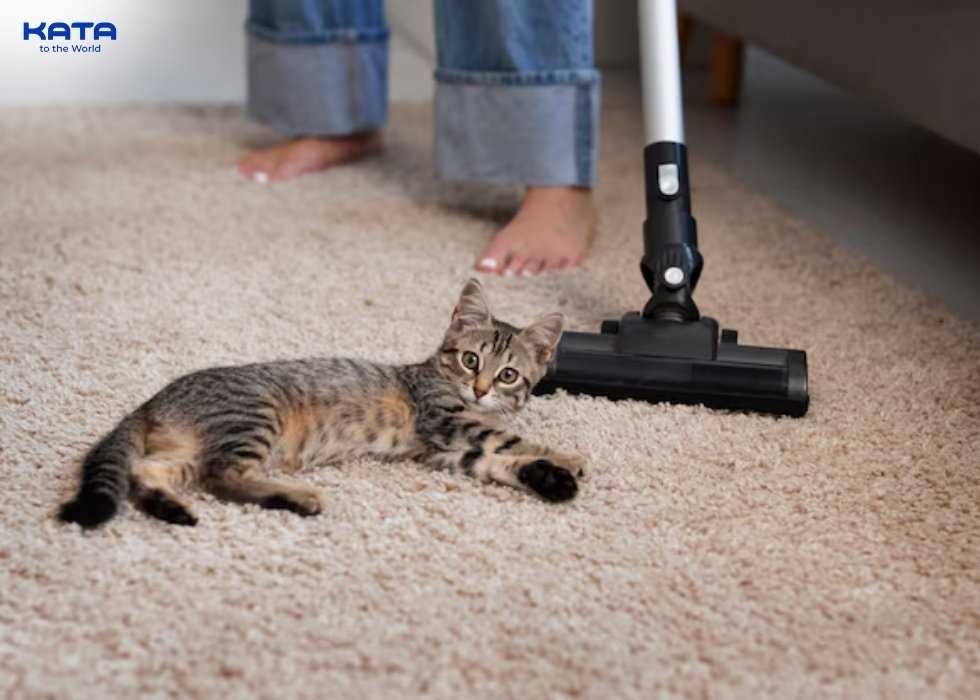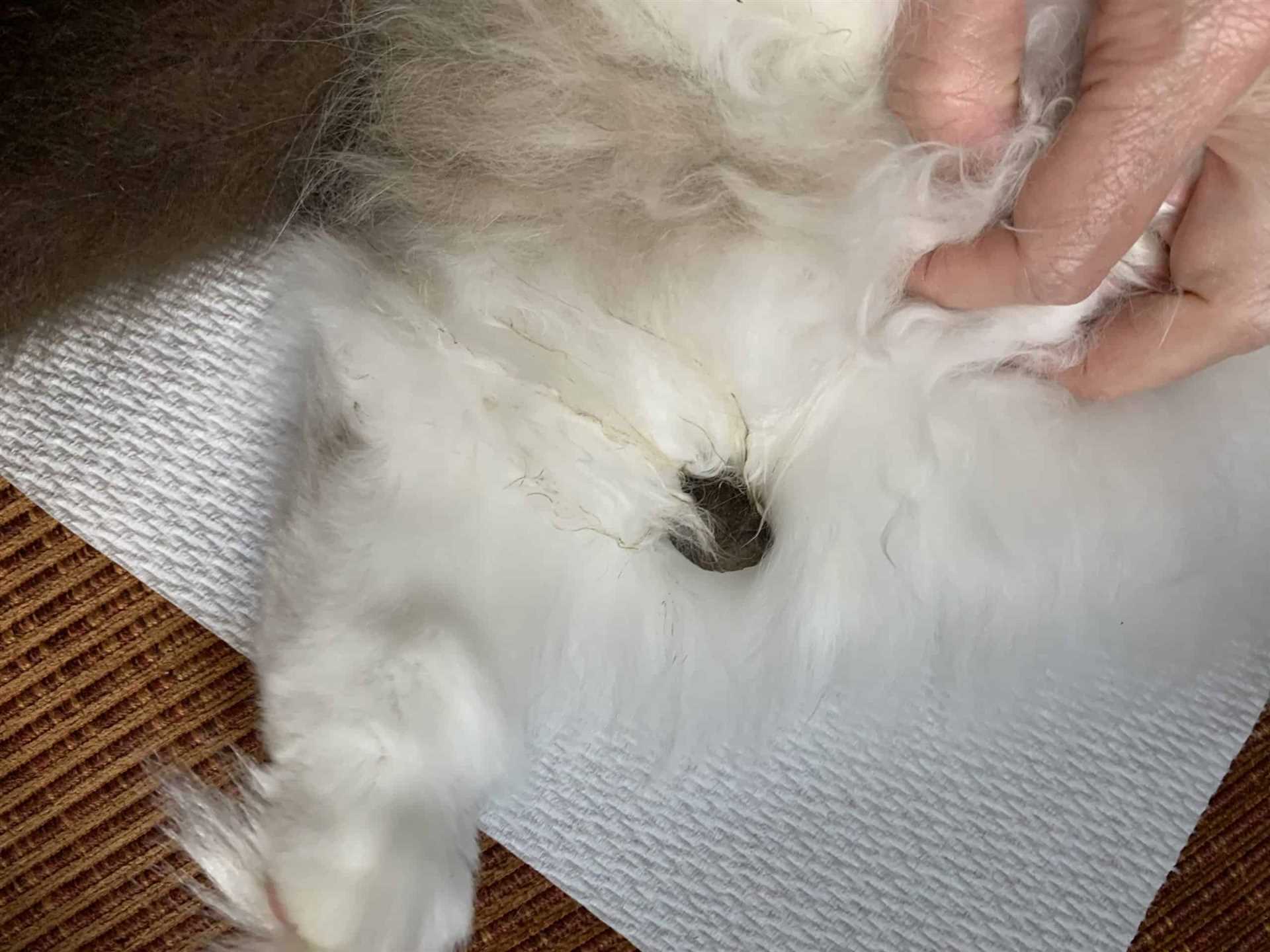



The first step involves gathering the right supplies: paper towels, a mixture of warm water and mild dish soap, and white vinegar. Blot the area gently with paper towels to absorb any moisture.
Next, create a simple cleaning solution by combining equal parts of water and vinegar. Apply this mixture to the stained area using a clean cloth, working from the outside towards the center to prevent spreading. Blot again with paper towels to lift the stain.
After that, rinse the area with plain water and blot dry with a clean towel. For lingering odors, sprinkle baking soda over the area once it’s dry, letting it sit for a few hours before vacuuming it up.
Maintaining a clean environment is essential, so regular inspections can help catch any accidents early. Remember, quick action leads to better results!
Assessing the Damage: Identifying the Type of Stain
Recognizing the nature of the stain is key to choosing the right remedy. First, examine the area closely. Is it a solid mass or more of a messy smear? Solid waste can often be scooped up, while a smear will require different attention.
Next, check the color. A dark brown shade indicates it’s fresh, while a lighter color suggests it has dried. Fresh stains are typically easier to remove, so act quickly. If the stain has dried, it may require soaking solutions to loosen it up.
Also, assess the texture. A gritty texture may indicate particles that can be removed with a vacuum or a gentle scrape, while sticky residues need a liquid solution to dissolve. Different approaches are necessary based on these characteristics.
Lastly, consider the underlying material. Is it synthetic or natural fiber? Some fibers are more resilient than others. Testing a small, inconspicuous area first helps avoid damage during cleaning. Understanding these factors greatly influences the effectiveness of the cleaning process.
Gathering Necessary Cleaning Supplies
Before tackling the mess, gather a few important tools. A pair of disposable gloves will keep paws clean and prevent any direct contact. Next, grab some paper towels or absorbent cloths for initial blotting. An enzymatic cleaner designed for pet stains is crucial for breaking down odors and residues. A soft-bristle brush can help lift any remaining particles without damaging fibers. Don’t forget a bucket or bowl for mixing solutions if needed. A scraper or spatula works well for removing solid matter; just be gentle to avoid pushing it deeper. For stubborn stains, consider a steam cleaner or a specialized carpet cleaner. For guidance on additional cleaning tools, check out does a metal pan scrubber work as a kettle de scaler. Having these items ready ensures a smoother cleanup experience.
Immediate Response: How to Act Quickly
First, grab a pair of disposable gloves to protect those lovely paws. Carefully approach the mess to avoid spreading it further. Use a plastic scoop or a paper towel to lift the solid waste. Be gentle; scraping can damage the fibers. Place the waste in a sealed bag to contain the odor.
Blotting the Area
Next, take a clean cloth or paper towel and blot the soiled area. Press down to absorb any moisture but avoid rubbing, as this might push the stain deeper. Switch to a fresh cloth as needed to prevent spreading. Keep blotting until no more residue transfers onto the cloth.
Applying a Cleaning Solution
Prepare a mixture of water and white vinegar or a pet-safe enzymatic cleaner. Dampen a cloth with the solution and gently dab the stain. Allow it to sit for a few minutes to break down any remaining particles. Blot again with a clean, dry cloth to lift the stain. Repeat if necessary until the area is clear.
Step-by-Step Cleaning Process for Fresh Stains
First, grab some paper towels or an old cloth. Gently blot the area to absorb as much moisture as possible. Avoid rubbing, as this might push the material deeper into the fibers.
Next, mix a solution of warm water and mild dish soap. Use a clean cloth to apply this mixture to the stained area. Blot the stain again, moving from the outer edges toward the center to prevent spreading.
After that, rinse the cloth with plain water, then blot the area again to remove any soap residue. This helps in preventing a sticky mess.
Now, sprinkle a small amount of baking soda over the damp area. This absorbs odors and helps with stain removal. Allow it to sit for at least 15 minutes.
Finally, vacuum the area to remove the baking soda. If any stain remains, repeat the process or consider using an enzymatic cleaner specifically designed for organic stains.
Additional Tips
- Always test cleaning solutions on a small, hidden area first.
- Work quickly for the best results.
- Keep supplies handy for future incidents.
Dealing with Dried and Set Stains

First, gather some warm water and a mild dish soap. Mix them in a bowl to create a soapy solution. Dampen a clean cloth with this mixture, ensuring it’s not soaking wet, and gently blot the stained area. It’s important not to scrub, as this can spread the mess further.
If the residue remains, consider using a mixture of white vinegar and water in equal parts. Apply it to the stain and let it sit for about 10-15 minutes. This helps to break down the dried material.
Afterward, blot again with a clean cloth to absorb the liquid and any loosened particles. Repeat the process until the mark fades. For persistent stains, a store-bought enzymatic cleaner specifically designed for organic stains can be effective. Follow the manufacturer’s instructions for the best results.
Always remember to test any cleaning solution on an inconspicuous area first to ensure it doesn’t damage the fibers or color of the fabric. Once the stain is gone, rinse the area with cold water and blot up excess moisture. Finally, let it air dry completely to prevent mold or odors from developing.
Neutralizing Odors After Cleaning
To tackle lingering scents after the removal process, a few methods stand out. First, a mixture of white vinegar and water can effectively neutralize odors. Combine equal parts of both in a spray bottle and lightly mist the affected area. Allow it to sit for about 10 minutes before blotting with a clean cloth.
Baking soda is another powerful ally. Sprinkle a generous amount over the cleaned spot and let it sit overnight. This allows the baking soda to absorb any remaining odors. The next day, vacuum thoroughly to remove the baking soda.
For persistent smells, consider using enzymatic cleaners specifically formulated to break down organic materials. Follow the instructions on the product label for the best results.
Air circulation can significantly help in odor elimination. Keeping windows open for ventilation or using fans can assist in dispersing any remaining scents.
Investing in an air purifier designed for pet owners can greatly enhance indoor air quality, reducing odors over time.
| Method | Instructions |
|---|---|
| Vinegar Solution | Mix equal parts vinegar and water, mist, let sit for 10 mins, blot. |
| Baking Soda | Sprinkle generously, let sit overnight, vacuum next day. |
| Enzymatic Cleaner | Follow product instructions for effective odor breakdown. |
| Ventilation | Open windows or use fans to improve air circulation. |
Preventing Future Accidents on Carpet

Establishing a designated area for bathroom breaks significantly reduces mishaps. A litter box should be accessible, clean, and located in a quiet space, away from high-traffic zones.
Regular maintenance of the litter box is vital. Frequent cleaning and replenishing of litter can encourage proper usage. Cats are particular; a dirty box may lead to avoidance.
Monitoring dietary habits helps identify any potential issues. A balanced diet tailored to specific needs minimizes digestive problems that could lead to accidents indoors.
Incorporating playtime and exercise into the daily routine keeps energy levels balanced. A bored feline may engage in undesirable behaviors, including inappropriate elimination.
Consider consulting a veterinarian if behavioral changes arise. Stressful situations or health concerns may contribute to accidents, and addressing these factors early can prevent future incidents.
For multi-pet households, ensuring each animal has its own space and resources can prevent territorial disputes, which may lead to stress and accidents.
Establishing a consistent feeding schedule promotes regular bathroom habits. Predictable routines help in managing elimination times, making it easier to monitor and prevent accidents.
Lastly, positive reinforcement techniques can encourage desirable behaviors. Rewarding proper litter box usage with treats or affection strengthens the connection between good behavior and positive outcomes.







